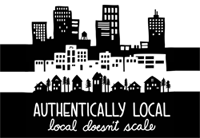This is part of the essay “Ravenna Park (Seattle)“, appearing here thanks to HistoryLink.org and author Peter Blecha, under a Creative Commons license.
[If you missed Part 1, you can find it here.]
Rainier Power and Railway Company
The townsite of Ravenna became even more attractive to would-be home buyers a couple years later with the arrival of streetcar service via a route that would skirt the entire length of the park (along its southern border). Seattle pioneer David Denny (1832-1903) was behind the project. Denny had gotten into real estate. After platting the neighborhoods bordering the park — an area still so distant from downtown that the Denny family soon built and then maintained a country “summer home” (6315? NE 63rd Street) there — he helped found the Rainier Power and Railway Company in order to facilitate easy transportation to the nearby Brooklyn neighborhood (today’s University District).
That line was extended to Ravenna Park around 1892 and three years later was reorganized as the Third Street and Suburban Railway, which included a Ravenna Station (near today’s NE 58th Street and 20th Avenue NE). After departing its terminus downtown, the line passed through logged and largely uninhabited terrain until it turned back southward at Ravenna. One writer noted that “Most of the area through the northern part of this system’s route was inhabited only by squirrels and gophers” (Leslie Blanchard quoted in “No Finer Site”).
But it was the sight of critters and the unspoiled nature of the ravine that made it such an attraction. The granddaughter of Denny’s brother Arthur (1822-1899), Sophie Frye Bass (1866-1947), wrote that:
“My first recollection of Ravenna Park was a moonlight excursion in midsummer, when the moon failed to appear, a cool breeze came up, and a chill was in the air. Even so, the large coal-oil lamps shining through the trees lighting the path that ran through the park, and the bobbing and swaying Chinese lanterns made it seem like a land fit for fairies. It was quite a trip to Ravenna in those days, for we took the train at the funny little station at the foot of Columbia Street on the waterfront and rode nine and a half miles to the park … it became a favorite spot for picnickers and a show place for out-of-town visitors (Bass).
Next week: Original Beauty and Natural Wonders
______________________
Sources:
W. W. Beck, Ravenna Park — ‘Im Walde,’ (1903), Peter Blecha collection, Seattle; W. W. Beck, Ravenna Park — ‘Im Walde,’ 16-page postcard booklet, undated, in Peter Blecha collection; W. W. Beck, Ravenna Park (ca. 1909), Peter Blecha collection; “Ravenna Park Guide,” brochure, 1909, Peter Blecha collection; “Ravenna Or Big Tree Park: It is Famous = “Nature’s Exposition,” postcard, 1909, Peter Blecha collection; Harvey Manning, Winter Walks and Hikes (Seattle: Mountaineers Books, 2002), 42; Betty McDonald, Anybody Can Do Anything (Philadelphia / New York: J. B. Lippincott Co, 1950), 129-130; Paula Becker, “Time Traveling The Roosevelt District With Betty Macdonald,” Seattlepress.com website accessed July 13, 2010 (http://seattlepress.com/article-9455.html); “One of Ravenna’s Giant Trees Christened ‘Paderewski,'” Interlaken, February 8, 1908, p. 1; Sophie Frye Bass, When Seattle Was A Village (Seattle: Lowman & Hanford Co., 1947), 106-108: David Buerge, “Indian Lake Washington,” Seattle Weekly, August 1-7, 1984; Seattle Polk City Directory (1901-1934); Directory of the National Society of the Daughters of the American Revolution (Washington D.C.: Memorial Continental Hall, 1911), 1340; “Mrs. L. C. Beck Funeral To Be Held Today: Woman Widely Known In Musical and Club Circles Is Mourned By Seattle Friends,” Seattle Post-Intelligencer, July 9, 1928, p. 13; Kate C. Duncan 1001 Curious Things: Tales from Ye Olde Curiosity Shop (Seattle: University of Washington Press, 2000), 73-78; Andrea Casadio, email to Peter Blecha, January 30, 2008; “No Finer Site: The University of Washington’s Early Years On Union Bay,” Web exhibition, University of Washington Libraries website accessed August 19, 2010 (http://lib.washington.edu/exhibits/site/); HistoryLink.org Online Encyclopedia of Washington State History, “Seattle’s Ravenna Park Bridge is constructed in 1913” (by Priscilla Long), and “WPA builds Cowen Park Bridge in Seattle’s Ravenna neighborhood in 1936” (by Priscilla Long), and “John Olmsted arrives in Seattle to design city parks on April 30, 1903” (by David Williams and Walt Crowley), and “David Thomas Denny (1832-1903)” (by David Wilma), http://www.historylink.org/ (accessed August 1, 2010); Esther Campbell, Bagpipes in the Woodwind Section (Seattle: Seattle Symphony Women’s Association, 1978), 9; William Arnold, “The Great Mystery of Ravenna Park,” Seattle Post-Intelligencer, Northwest Today section, December 17, 1972, pp. 8-9; Steve Cronin, “Ravenna Park’s Famous Trees Vanished Furtively,” UW Daily, May 25, 1977, p. 3; James Bush, “Remembering William W. Beck: The Father of Ravenna Park,” The Seattle Sun, August 2003, The Seattle Sun website accessed August 25, 2010 (http://parkprojects.com/2003news/0308aug/hisbeck.html); Mary R. Watson, travel diary (handwritten), 1910, portion accessed on eBay, December 2006, copy in possession of Peter Blecha; Russ Hanbey, “1916 Seattle was a Hotbed of Sin When 2 Officers Were Killed,” The Seattle Times, February 6, 2010 (http://seattletimes.nwsource.com); and Peter Blecha archives.








Speak Your Mind